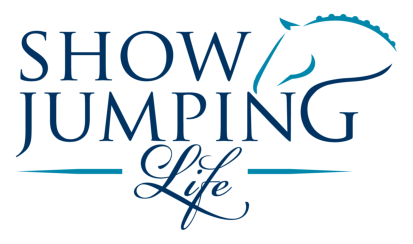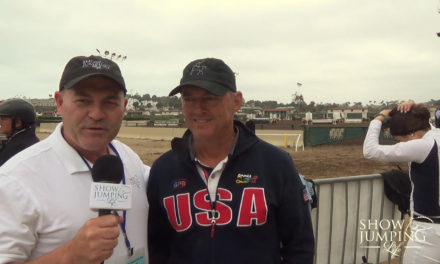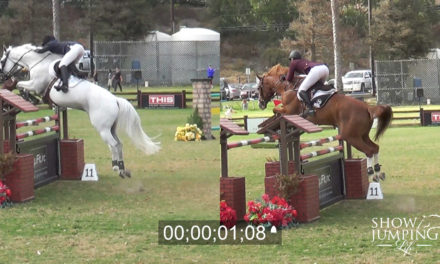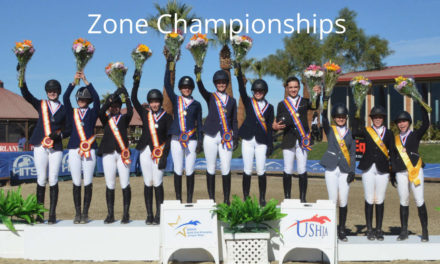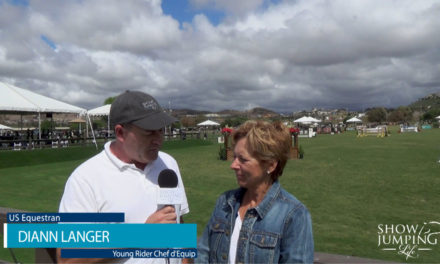Interested In Riding On A College Team?
Executive Director of the National Collegiate Equestrian Association, Dr. Leah Holland Fiorentino, Discusses Junior Hunt Seat Medal Finals
If you’re interested in riding for an NCAA team, you will want to know about the NCEA Junior Hunt Seat Medal.
Now in its second year, the NCEA Junior Hunt Seat Medal was created to give young riders an opportunity to compete in classes that are similar in format to what they will experience at the collegiate level.
Coaches receive videos and contact information for all riders who compete in the finals. This enables coaches to track their progression within NCAA guidelines and begin adding them to their list of recruiting prospects.
Special thanks go out to Tom O’Mara who was instrumental in creating this championship.
Class Specifications
Open to all Junior members of the USEF or Equine Canada. Riders need not be members of the NCEA Medal to compete in the class, but only riders who possess a current NCEA Medal membership number will accrue points and be put on the NCEA Medal ranking list.
Riders compete in the NCEA Medal ranking list (East Coast, Midwest, West Coast) based on their address submitted to the NCEA Medal membership office, unless at the time of application for membership they elect in writing to compete in the other coast final. Class is pinned based on combined performance over two phases, fences and flat. Competitors must use the same horse in both phases.
Fences Phase: Shown over a minimum of eight fences 3′ 3” in height, spread not to exceed fence height. The course may be either a Jumper or Hunter type course and must include at least two changes of direction and a combination. Water obstacles and liverpools are not permitted. An open numerical scoring system is used in the first phase, with each rider’s score announced at the completion of their round.
Flat Phase: The top 10 are asked to return to the arena for a flat phase performing at a walk, trot and canter. From USEF Tests 1-19. In addition, riders are required to perform 2 of 3 basic dressage movements of a shoulder-in, haunches-in or leg yield both directions of the ring at the discretion of the judge. The Under Saddle performance of those riders selected to participate in this phase shall count 50% of the overall two phase performance.
There is no minimum requirement to fill the class. Riders who do not return for the flat phase are not eligible for a ribbon overall per EQ107.6
FINALS
The top 50 riders from each ranking list (EAST COAST, MIDWEST, WEST COAST) are invited to compete in the Finals. HITS Shows hosts all finals for the medal class. The first on the East Coast in conjunction with HITS Championship in September. The second in the Midwest in conjunction with Showplace Fall Classic II, September. The last on the West Coast in conjunction with the National Sunshine Series.
Order of go for each phase is drawn the day before the competition.
The finals are a three-phase competition: over fences phase, flat phase, bracket phase.
Phase 1 – Over Fences. Conducted over a course of at least 10 fences at 3’3” including a double and a triple combination. The course includes at least two changes of direction. Hunter style fences and jumper style fences are allowed, or a combination of the two. Water obstacles and liverpools are not permitted. An open numerical system of scoring must be used for the fences phase.
The top 20% or top ten scoring riders, whichever is greater, return for the flat phase.
Phase 2 – Flat. An open numerical system of scoring is used for the flat phase. The riders are asked to perform any of USEF Tests 1-19 as well as 2 out of 3 movements of shoulder in, haunches in, or leg yield both directions of the ring.
Phase 3 – Collegiate/Bracket Style. The top four riders, as determined by the combination of the fences and flat phase (each counting equally), return for the bracket phase.
The first and fourth place riders compete on the same horse over a course of at least 8 fences, riding the horse of the second or third place rider with the horse chosen by draw.
The second and third place riders compete on the same horse over a course of at least 8 fences, riding the horse of the first or fourth rider with the horse chosen by draw.
The winners of each head-to-head compete for the championship and reserve on the same horse.
Third and fourth place are determined by adding scores of each rider from phases 1, 2 and 3.
Fifth through tenth place will be awarded based on scores from the fences and flat phases.
Information and membership applications are available from Rygate Show Services Click Here.
History of the NCEA
In 1998, Equestrian was identified and adopted by the National Collegiate Athletic Association (NCAA) and the Committee on Women’s Athletics (CWA) as an emerging sport for women at the Division I and II and III levels. Currently, there are 18 Division I and four Division II programs sponsoring equestrian.
The National Collegiate Equestrian Association (NCEA), a non-profit corporation, was created as a governing body to advance the sport of equestrian. The NCEA is responsible for the development and administration of equestrian rules and guidelines. Equestrian is subject to all NCAA policies and procedures in the same manner as other sports.
The NCEA developed sub-committees for areas critical to the advancement of equestrian. These sub-committees consist of coaches and administrators from member institutions. Coaches and administrators are invited to serve on any of the various NCEA Committees of their choice. The committees include but are not limited to: Emerging Sports, Competition, Promotions, Sponsorship, Selection, and Championship. Each committee is charged with helping to progress equestrian to championship sport status within the NCAA. Additionally, liaisons from the United States Equestrian Federation (USEF) and the American Quarter Horse Association (AQHA) interact with and provide input to these committees and the NCEA Executive Committee.
For more information about the NCEA, Click Here.
